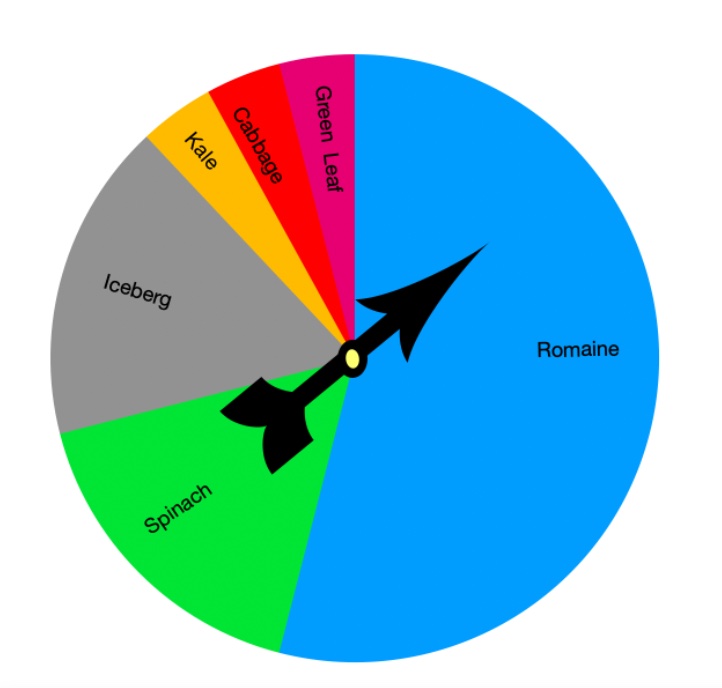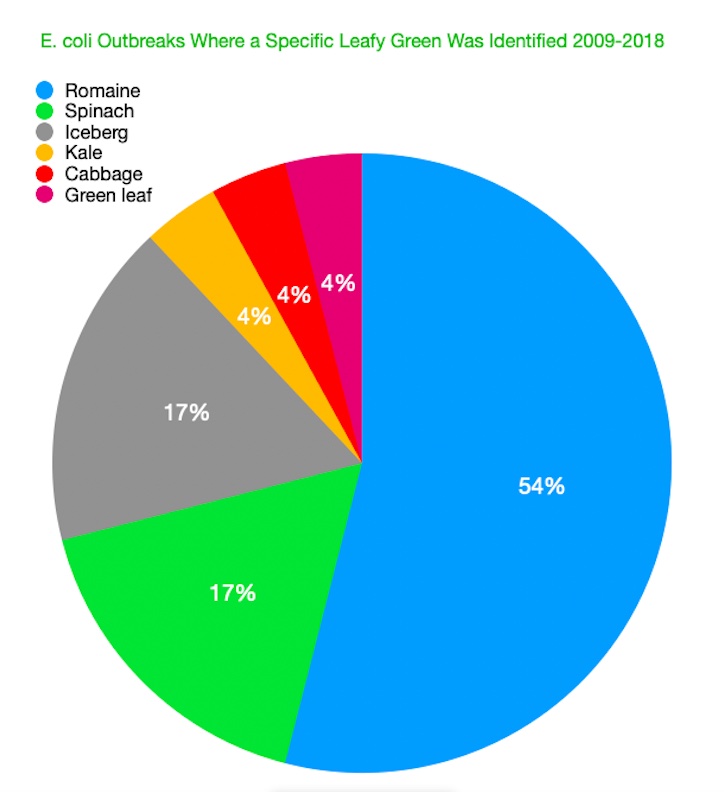Leafy greens are the second-most common source of E. coli outbreaks, according to the Centers for Disease Control and Prevention (CDC). But are some riskier than others? According to a recent CDC report, the answer is, yes.

Combined, these outbreaks were associated with 1,212 illnesses, 420 hospitalizations, 77 cases of a form of kidney failure called hemolytic uremic syndrome (HUS), and eight deaths.
Thirty-one of the outbreaks occurred in the United States, four took place in Canada and five included both countries
In 24 of the outbreaks, health officials were able to identify a single specific leafy green as the source. Of those, romaine lettuce was identified more often than all other types of leafy greens, accounting for more than half of the outbreaks (13). Spinach and iceberg were each linked to four; cabbage, green leaf, and kale were associated with one apiece.

Only nine of the outbreaks were publically announced by federal agencies as leafy greens were usually out of the supply chain by the time investigators had identified them as the source. A product recall was triggered by five of them. The recalled items included bagged shredded romaine, bagged spinach and spring mix, shredded iceberg and romaine, and ready-to-eat salads and sandwich wraps containing romaine.
Although, as the report’s name suggests, some lessons may have been learned from the investigations of these outbreaks, many of the underlying problems that stymie these investigations, such as poor record-keeping, lack of traceability, inadequate testing and the continued use of untreated water from irrigation ditches, persist. And so do the outbreaks.
Since 2018, leafy greens were identified as the confirmed or suspected source of five E. coli outbreaks, three of them occurred this year. The outbreaks were announced this fall by the CDC as E. coli outbreaks with unknown sources and ended unsolved after sickening dozens of people.
And some of these outbreaks are linked to each other. Over the last three years, nine E. coli outbreaks have been linked to the same E. coli strain, the same romaine lettuce grower, or both.
If you developed an E. coli infection from contaminated romaine lettuce or other leafy greens and would like a free consultation with an experienced E. coli lawyer, please contact our E. coli Legal Team. We have represented clients in every major E. coli outbreak in the U.S. You can reach us by calling 1-888-377-8900, sending a text to 612-261-0856, or by completing the form below. The consultation is free and there is no obligation.